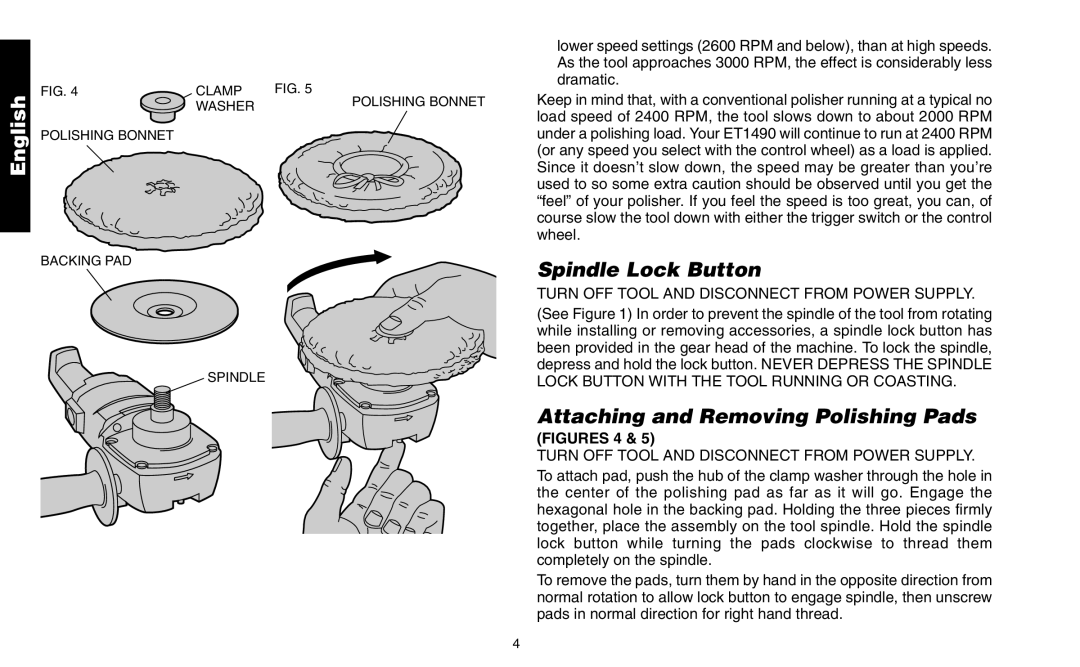
English
|
|
| lower speed settings (2600 RPM and below), than at high speeds. | |
|
|
| As the tool approaches 3000 RPM, the effect is considerably less | |
FIG. 4 | CLAMP | FIG. 5 | dramatic. | |
Keep in mind that, with a conventional polisher running at a typical no | ||||
| WASHER | POLISHING BONNET | ||
|
| load speed of 2400 RPM, the tool slows down to about 2000 RPM | ||
|
|
| ||
POLISHING BONNET |
|
| under a polishing load. Your ET1490 will continue to run at 2400 RPM | |
|
|
| (or any speed you select with the control wheel) as a load is applied. | |
|
|
| Since it doesn’t slow down, the speed may be greater than you’re | |
|
|
| used to so some extra caution should be observed until you get the | |
|
|
| “feel” of your polisher. If you feel the speed is too great, you can, of | |
|
|
| course slow the tool down with either the trigger switch or the control | |
|
|
| wheel. | |
BACKING PAD |
|
| Spindle Lock Button | |
|
|
| ||
|
|
| TURN OFF TOOL AND DISCONNECT FROM POWER SUPPLY. | |
|
|
| (See Figure 1) In order to prevent the spindle of the tool from rotating | |
|
|
| while installing or removing accessories, a spindle lock button has | |
|
|
| been provided in the gear head of the machine. To lock the spindle, | |
| SPINDLE |
| depress and hold the lock button. NEVER DEPRESS THE SPINDLE | |
|
| LOCK BUTTON WITH THE TOOL RUNNING OR COASTING. | ||
|
|
| Attaching and Removing Polishing Pads | |
|
|
| (FIGURES 4 & 5) | |
|
|
| TURN OFF TOOL AND DISCONNECT FROM POWER SUPPLY. | |
|
|
| To attach pad, push the hub of the clamp washer through the hole in | |
|
|
| the center of the polishing pad as far as it will go. Engage the | |
|
|
| hexagonal hole in the backing pad. Holding the three pieces firmly | |
|
|
| together, place the assembly on the tool spindle. Hold the spindle | |
|
|
| lock button while turning the pads clockwise to thread them | |
|
|
| completely on the spindle. | |
|
|
| To remove the pads, turn them by hand in the opposite direction from | |
|
|
| normal rotation to allow lock button to engage spindle, then unscrew | |
|
|
| pads in normal direction for right hand thread. |
4
